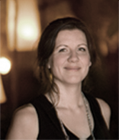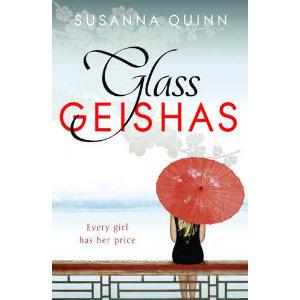 I’m very pleased to welcome to my Literary Sofa Glass Geishas author Susanna Quinn, who has generously decided to reveal the plot secrets that helped her get published. I follow on with a few thoughts on plot and a mini-review of her book, which is one of my Top 10 Summer Reads 2012. Over to Susanna…
I’m very pleased to welcome to my Literary Sofa Glass Geishas author Susanna Quinn, who has generously decided to reveal the plot secrets that helped her get published. I follow on with a few thoughts on plot and a mini-review of her book, which is one of my Top 10 Summer Reads 2012. Over to Susanna…
Ah, plot. A piece of cake for some, a great hurdle for many. When I wrote Glass Geishas, I spent more time plotting than writing. In fact, Glass Geishas had around 5 different plots during the eight years I tried to get it published, all lovingly written, and less lovingly rejected.
What was so different about the final version of Glass Geishas, which was plucked from the slush pile and accepted by a major publisher? I’d learned the archetypal secrets of great plotting. Harry Potter, Lord of the Rings, Pride and Prejudice – they all follow plot archetypes.
How can you use plot archetypes to write a novel? Here are my three top tips:
1. Pick a classic story you love, and unpick its major scenes
Classic stories are classic for a reason. They have plots (and characters) that resonate deeply within the human psyche. Almost all classic stories fit into ‘formulas’ for story success that the movie industry follows religiously. When you unpick a classic story scene-by-scene, you begin to understand its key elements – what and where the plot turning points are, why there is (or isn’t) a happy ending and where the major story lies.
Write the major scenes of your favorite classic story on note cards. You should have no more than twenty of them – if you’ve written more, think about scenes you could cut without losing sense of the story. If you were explaining the story to someone who’d never heard it, what would they absolutely need to know?
2. Plot your novel based on the scenes you’ve unpicked
For every note card you have, think of an equivalent scene that fits whatever story you’re trying to tell. You may find your story becomes something completely different, which is fine. I guarantee that by fitting your plot around a classic story, you’ll be creating a plot that really moves people in all the right ways.
This might sound like cheating, but it worked for Bridget Jones’s Diary, which closely imitates Pride and Prejudice. There are countless other bestselling novels that loosely imitate classic plots.
3. Know the purpose of your plot
We write stories for a reason. Yes – characters are interesting. Yes – we get some emotional knowledge and satisfaction from deep and meaningful heroes. But ultimately, you’re writing a plot for a purpose. What is that purpose? It’s to communicate one key, fundamental message: human beings can only survive by helping each other, and selfish people will always fail. If you think this sounds corny, American Psycho, in its own brutal way, communicates exactly this value. A selfish character is doomed to failure, just as a good character will be helped to succeed.
Once you know why you’re plotting, you’ll notice your stories taking on great direction and purpose. You begin to understand why things have to happen a certain way, and how your plot takes readers to a satisfying conclusion.
Can you guess which archetypal plot I used to write Glass Geishas?
You can find out more about Susanna and Glass Geishas here and follow her on Twitter: @bookgroupauthor
More on plot
Thanks very much to Susanna for sharing her secrets of success! I always enjoy hearing how other writers approach the task of plotting (if they plot at all, that is). There are so many ways of doing it, between the two extremes of writing a first draft with no fixed ideas at all and seeing where it leads, to meticulously planning a whole novel in minute detail before even starting to write. Susanna’s strategy interested me and I can identify with parts of it. I employ the index card approach for major developments, ending up with one per chapter (30 in my first manuscript). I find this helps with the development and pace of the story but the finer details don’t come to me until I think about each individual chapter, and it’s usually kick-started by a piece of dialog. I’ve never consciously referred to the classics though!
There’s some great material for discussion in Susanna’s piece: Do you enjoy novels based on a familiar plot? Is it cheating? Do you agree with her about the fundamental dynamics between good and bad characters? What makes for a ‘satisfying conclusion’? If you’re a writer, how do you go about plotting?

As one of the more commercial titles on my Top 10 Summer Reads and the story of young women working in the nightclub business in Tokyo, Glass Geishas may appear deceptively light at first. As an experienced journalist, Susanna Quinn writes in a smooth and very readable style and the story has real tension and momentum, albeit stretching credibility at times. Steph is an engaging protagonist – admirably feisty and resourceful when she’s not being infuriatingly naive – all very believable of a character in her early 20s. I chose this book above all for its eye-opening exposure of a place and culture I previously knew very little about. Exotic night-time Tokyo and the sleazy workings of the Japanese sex industry were brought to life in shocking and vivid detail. Clearly Susanna Quinn really knows this world – she certainly knows how to pull the reader in; I found it worryingly, horribly compelling.
*POSTSCRIPT*
Having already read all of my Top 10 Summer Reads, in my next post I reveal which books I’ll be reading by the pool on my holiday in France, and why.

